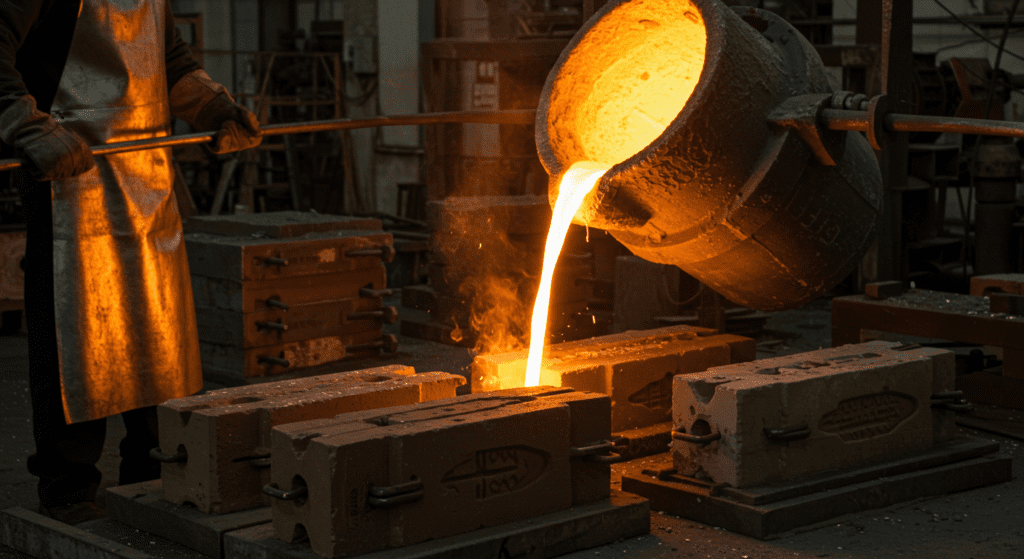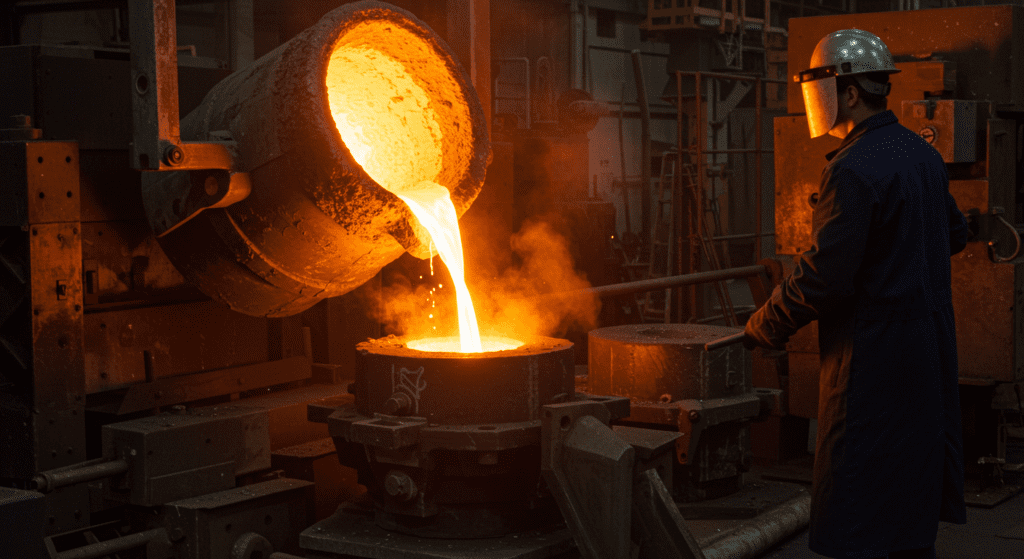The main difference between gravity casting and centrifugal casting is how molten metal fills the mold. Gravity casting relies on gravity to fill the mold, making it ideal for simpler parts. Centrifugal casting uses high-speed rotation to force metal outward, which improves density and is suited for cylindrical parts.

Gravity casting is a metal forming process that uses the earth’s natural gravitational force to fill a mold with molten metal. The process involves pouring liquid metal from above into a permanent mold or die, where gravity pulls the material down to fill every cavity and detail.

Centrifugal casting uses spinning force to distribute molten metal into a rotating mold. The mold spins at speeds between 300-3000 RPM, creating centrifugal force that pushes the liquid metal outward against the mold walls. This force is much stronger than gravity alone, typically 50-100 times greater.
| Aspect | Gravity Casting | Centrifugal Casting |
|---|---|---|
| Mechanical Properties | Tensile strength: 150-250 MPa for aluminum alloys. Moderate density with some porosity possible | Tensile strength: 200-350 MPa for aluminum alloys. Superior density with minimal porosity |
| Types of Metals | Aluminum alloys, zinc alloys, copper alloys, cast iron, magnesium alloys | Steel, stainless steel, cast iron, aluminum bronze, copper alloys, titanium |
| Production Costs | Lower tooling costs ($5,000-50,000 per mold). Higher labor costs due to manual pouring | Higher equipment costs ($100,000-500,000 for machines). Lower labor costs with automation |
| Part Geometry | Complex shapes with internal cores possible. Wall thickness from 3-50 mm | Limited to cylindrical or symmetrical shapes. Uniform wall thickness from 5-150 mm |
| Production Rate | 20-60 parts per hour. Suitable for medium volume production | 5-30 parts per hour. Best for small to medium batches |
| Typical Applications | Engine blocks, transmission cases, pump housings, decorative hardware, cookware | Pipes, tubes, cylinder liners, bearing bushings, brake drums, flywheels |
| Surface Finish | 3.2-6.3 μm Ra surface roughness. Good detail reproduction | 1.6-3.2 μm Ra surface roughness. Excellent outer surface quality |
| Defect Types | Shrinkage porosity, cold shuts, misruns, inclusions | Segregation at inner surface, hot tears in thick sections |
| Tooling Life | 50,000-100,000 cycles | 10,000-50,000 cycles |
